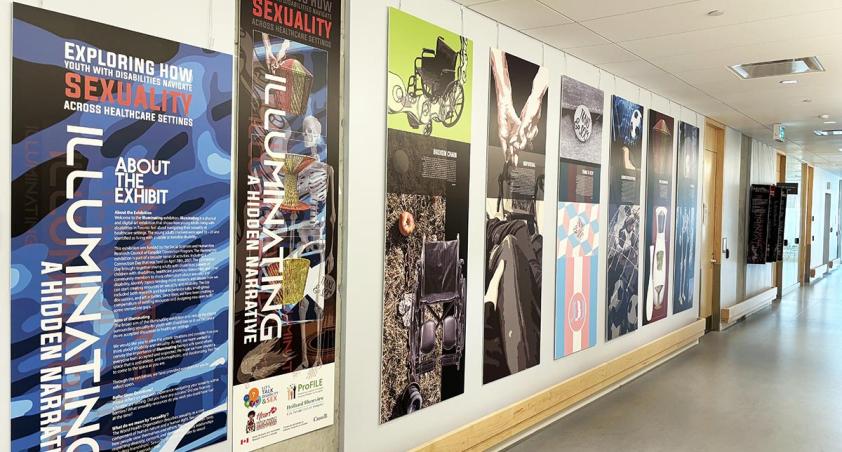Welcome to the digital art exhibition, Illuminating a Hidden Narrative. Illuminating is a physical and digital art exhibition exploring how young adults (aged 18-25) living with a visible or invisible disability navigate their sexuality in healthcare settings. The aim was to reduce stigma surrounding sexuality for youth with disabilities and promote more discussion in healthcare settings.
Illuminating was part of a broader series of activities, including a Connection Day in 2021 (hyper-link to events page), with the goal of creating spaces that are anti-ableist, anti-homophobic, and decolonizing.
Reflections
As you look at the artistic creations, reflect upon how you think about disability and sexuality. You may also wish to consider:
- How does the exhibition challenge your assumptions around disability and sexuality?
- Which stories or pieces impacted you the most? Why?
- Are there any pieces that make you uncomfortable? Why is that?
- In what ways does the exhibition challenge societal norms and stereotypes of young people with disabilities?
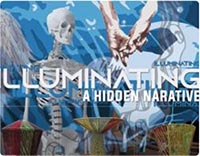 | Video Introduction Please click on the link below to watch an introductory video for the Illuminating art exhibition. |
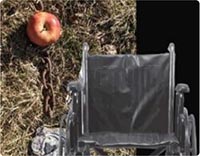 | Broken Chain This piece represents gender and sexual identity performative freedom. Disabled individuals are not held up to the same standards of masculinity or femininity on the gender spectrum. We are not seen in the ways that typically develop folks are. Those social chains are broken, allowing us to formulate our own gender and sexual identity more freely. In addition, my experience as a wheelchair user and a disabled individual in general has caused me to be much more in touch with my physicality because of my experience as an actor and having to consistently monitor my body for healthcare. The wheelchair also acts as a screening process for potential romantic and sexual partners. It turns away those who would reject me for simply being disabled and helps me identify those who only want to date me for being as such. Download Broken Chain (PDF) |
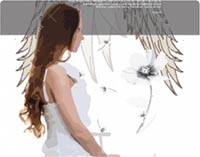 | Pure like a Flower Purity. Pure like a flower. Save your virginity, protect your innocence. Women are led to believe that our moral compass lies somewhere between our legs. At 16, the doctors ask, "are you sexually active? Wait, never mind you're too young anyway." Ashamed, promiscuous and undesirable. While free protections are given out to young boys, young girls are taught to stay pure. Purity. The notion that controls and exploits women. Men get praised, women get told to close their legs. She’s either pure or she’s not, and if she’s not? She’s indecent. But this is my body, I have control. Whoever I'm with is not your concern. Women-shaming is an internalized oppression. Sexual double standards established by men. Men aren't praised for 'saving themselves.' So why are we? -Shehrin |
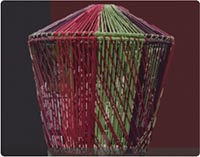 | The Interwoven These colourful installations reflect my experiences as a person with disability and identifying on the LGBTQ spectrum. Bright and dark colours represent my mixed feelings towards navigating sexuality and sexual wellness in healthcare settings, the interwoven lines build a tight network but often there are uncomfortable struggles during interactions due to misunderstandings from each healthcare professional. Despite any negativity, I try to stay optimistic that further education and discussion about these issues will build more awareness among the healthcare community and would become more accepting of differences. -Jade Download The Interwoven (PDF) |
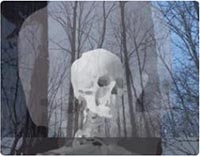 | Lifeless Lifeless is how I feel -Orlando Download Lifeless (PDF) |
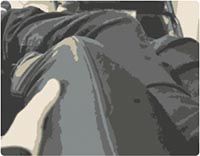 | Individual As a person with a disability, I live my life with the knowledge and unfortunate understanding that people will have their biases and stereotypes about me. They will group me as a “person with a disability” without firstly acknowledging that I am an individual. This is no different in any environment I put myself in, but when it comes to a healthcare experience, this is where I am most surprised. For me, growing up, I was taught that I could be anything I want to be and achieve any goal I put my mind to – from graduating school, traveling the world, independence, lifelong friendships, and even a healthy, positive relationship. The only thing I was not told was as soon as you think about or set being in a relationship as a goal to a healthcare provider, they will have all these biases and stereotypes projected onto you as if that is a foreign concept and try to convince you that you should not pursue one. With this photo, I wanted to inspire the idea in others that while you may be a person or a couple with a disability, that a healthy, fulfilling, and happy long-term relationship is possible (and should be normalized). And that it is possible, despite the biases people may have. -Effie Download Individual (PDF) |
 | Gender Stereotypes This project was really interesting. I am doing this project because I notice there is such a stigma with disabilities and sexuality. Society tells us that people with disabilities cannot be sexual beings and thus cannot have intimate relationships. I feel that healthcare professionals are uncomfortable talking about sexuality to youth with disabilities because they feel like it is taboo - because society tells us it is. The themes of my projections are gender and disability stereotypes. My first photo is one of a soccer ball and a pair of Dolce & Gabbana glasses. I chose this photo because society tells us that soccer is a “male” sport and Dolce & Gabbana is a “female” brand and I wanted to show that females like soccer too. My second photo is of a painting one of my friends did and gave me. It depicts a young female with a physical disability writing in her journal. I chose this photo because I wanted to dispel the myth that people with disabilities are incapable of having normal relationships. As a youth with a disability, I often get shut out when I talk about my plans to have a family and instead tell me that I should not have a family either because of my disability or because it is not normal to have or want a family in 2021. I want health professionals to know that youth with disabilities need and want the same things that other people need and want. -Alex |
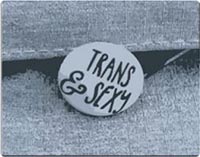 | Trans & Sexy Trans & Sexy. Well, yeah? Why wouldn’t it be? Unfortunately, this is not everyone’s perception. Especially, if you are like me and happen to be living with a multi-layered. I am both Trans and Disabled; which means I often have experiences with professionals in healthcare where they only focus on one part of who I am and not how all of my identities intersect. Trans folx and especially people who are disabled and Trans do not receive the same sexual health education and treatment as cis gendered/able-bodied people do. Trans folx and disabled people have a right to receive information about their bodies that corresponds with their lived realities. Trans/disabled people are sexy. We are sexy because of our resilience. The button, “Trans & Sexy” found its way to me about a month after I started my medical transition. I found it laying on the street and the message is one that I try to remember every day. I’m not only sexy because I’m an advocate for myself and others. I’m sexy because I am Trans; I am Disabled and all of those things make me who I am. -Logan Download Trans & Sexy (PDF) |
 | Poison I hate the boy who turned your lips to poison the guy who put his own impulses first and then told the world that those who commit his crimes are liable to change, because of course he’s not to be blamed and you aren’t a talker, I’ve watched them hurt you, and I know I’d be scared too because bruises aren’t just red, and blue, and purple and green and blood can only run for so long, but I know how much you crave the shower floor I feel like a watcher, not a saviour, I’m helpless. I have a heart, and blood like you and bruises of my own so maybe I should just start drinking and then I asked to taste the poison. Yet you stopped me so abruptly I couldn’t help but be selfish enough to think that it was personal it’s been a while. and since then I’ve signed the 3 worded contract with another accomplice because for once in my life, I gave up, and then again I gave in and in the end I’ll probably lose the game, but I’ll forever envy the addict who gets to choke on your blood and poison. -Tai Download Poison (PDF) |
Funding
This exhibition was funded by the Social Sciences and Humanities Research Council of Canada’s Connection Program and the Kimel Family Opportunities Fund through the Holland Bloorview Kids Rehabilitation Hospital Foundation. The idea was jointly developed by the HEART lab at Toronto Metropolitan University and ProFILE lab at Bloorview Research Institute. The exhibition was designed by Joseph Cannizzaro.
